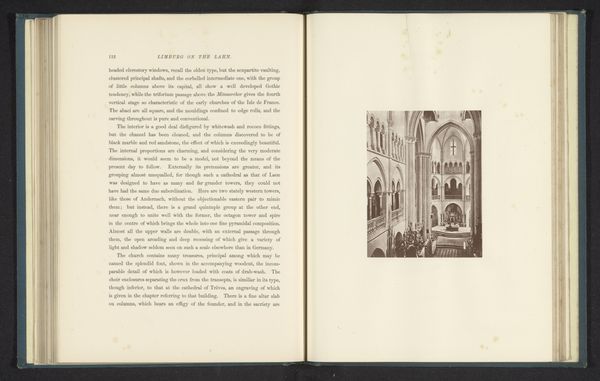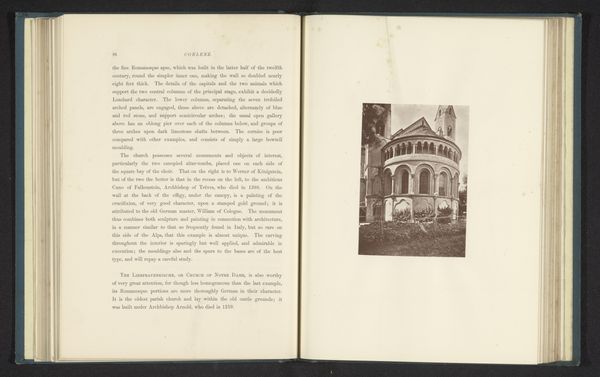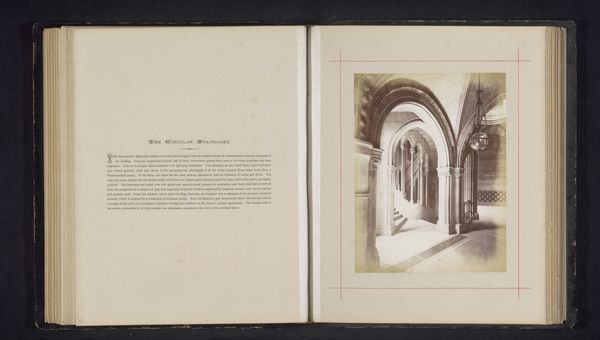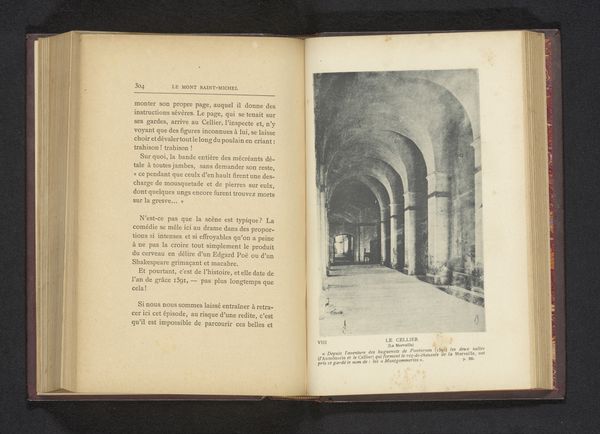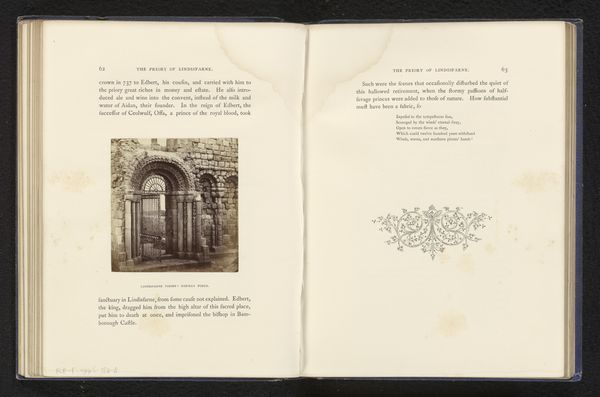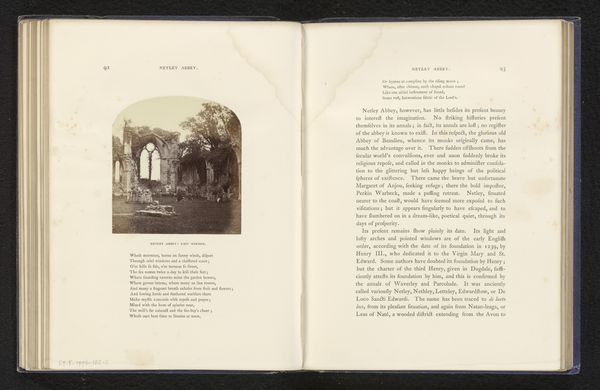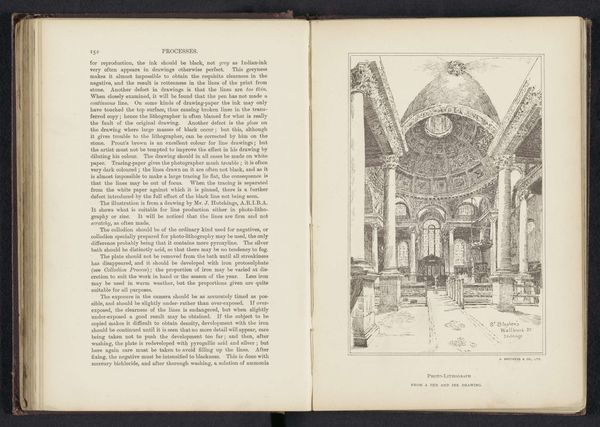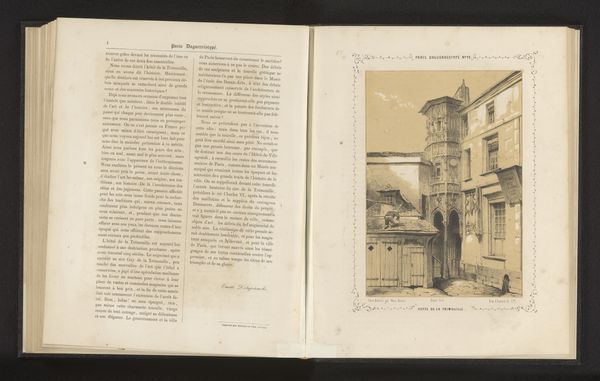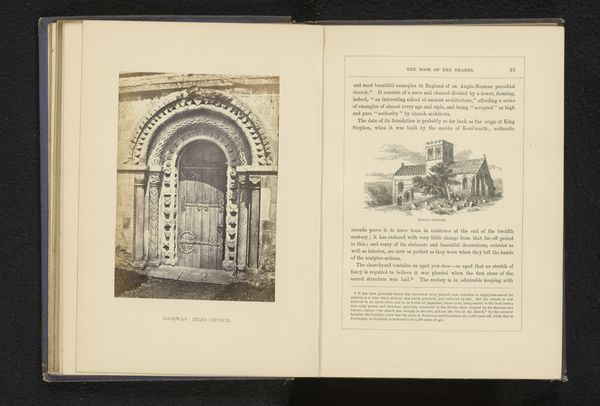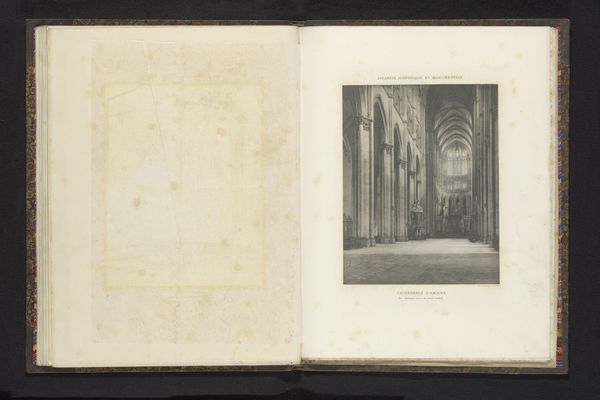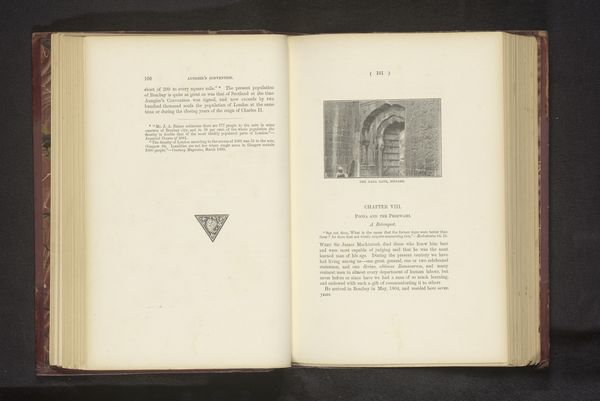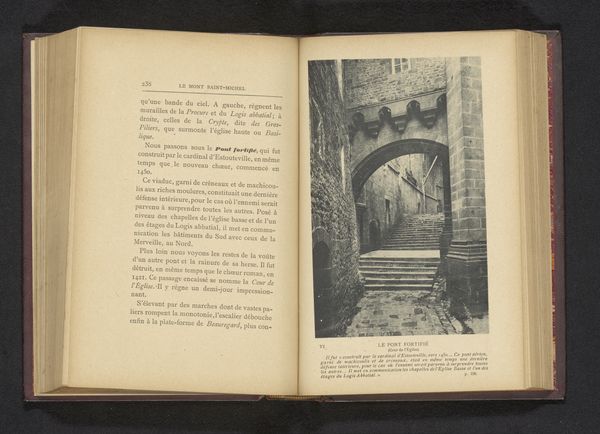
print, photography, architecture
# print
#
landscape
#
photography
#
romanesque
#
architecture
Dimensions: height 115 mm, width 90 mm
Copyright: Rijks Museum: Open Domain
Editor: This image presents a photographic print of the "Portaal van de Onze-Lieve-Vrouwekerk in Trier," taken before 1868 by Cundall & Fleming. The photograph has an appealing faded quality, which, combined with the Romanesque architecture, makes me think of something enduring yet fading. What do you notice about it? Curator: The Romanesque portal speaks volumes about faith and community in its time. Note the semi-circular arch, a classic symbol of Romanesque strength and stability. The repeated arches could represent cycles, spiritual journeys, or the hierarchical nature of the Church. What figures do you observe within the archivolts and tympanum? Editor: I can see figures, but their details are hard to make out. Are they common figures? Curator: They likely represent key figures—possibly apostles, saints, or even Old Testament prophets. Think about why the artists chose to depict these individuals above the doorway. What messages might they have conveyed to worshippers entering the church? The arrangement reminds us that this portal serves not just as an entry point to a building, but also as a gateway to a sacred realm. Editor: So the symbols aren't just decoration, they carry significant spiritual and historical weight. The portal isn't only about getting inside the church; it's an invitation to be part of something bigger. Curator: Precisely! And think about how the play of light and shadow would have transformed the portal throughout the day, animating the stone and further emphasizing the sacred atmosphere. Editor: I see the symbols and understand that there's meaning in everything that the photographer, architect, or sculptor chose. I realize this isn’t a simple snapshot; it's full of religious imagery! Curator: Exactly! And those choices echo across the ages.
Comments
No comments
Be the first to comment and join the conversation on the ultimate creative platform.
